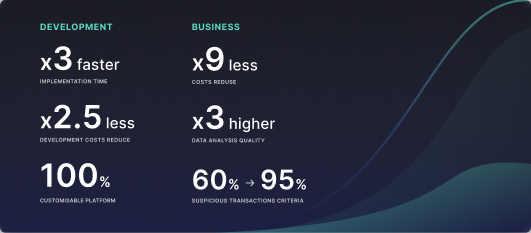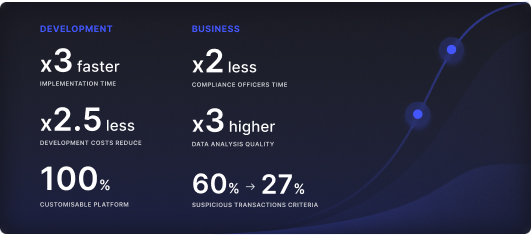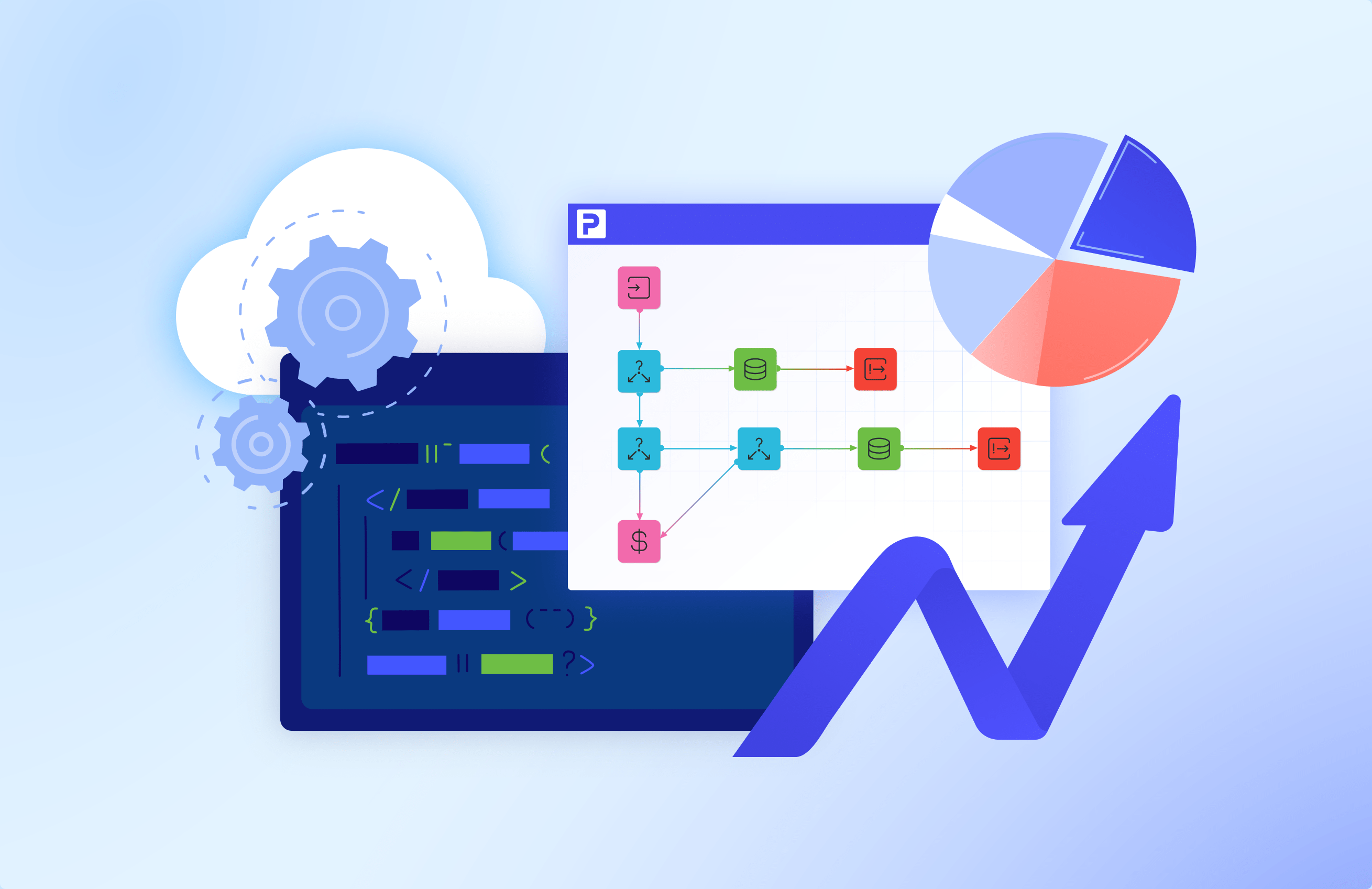How can automation streamline your commercial loan origination process?


Automation tools have become an inseparable part of modern banking and loan-granting processes. The degree of automation in loan decision-making can even tell how fast a bank processes applications, manages risks and works with customer data.
But how exactly do automation technologies transform banking operations? You will find out in this article. Here’s what’s inside:
- The challenges banks face in the modern business environment
- How automation technologies help banks overcome challenges and prosper
- The technologies for financial process automation and their impact on banks
- The tools to introduce banking automation technologies faster.
What Challenges Do Lenders Face Today
There are several issues lenders are currently facing. They affect the efficiency and agility of lending service providers, motivating them to look for a business model enhancement and radical digital transformation.
Stricter Compliance Requirements and Security Regulations
There are lots of compliance requirements and service regulations lenders should adhere to. Moreover, the regulations change rapidly, so it is becoming almost impossible for humans to keep track and adjust swiftly. At the same time, most of the brand-new regulations have to do with technologies necessary for getting the license to provide services online.
High Customer Expectations
Сlients demand digital services to provide a seamless experience. Renovating the lending software with more automation technologies does exactly what is needed — fast and performant service without much paperwork involved.
Tough Competition
The lending market is flooded with fintech companies that reach customers via the Internet and offer faster loan origination processes. So, each commercial organisation is compelled to introduce the latest technologies and provide up-to-the-standard services.
The Rising Need for Risk Minimisation
In the volatile economic environment we have today, quality risk assessment makes up the core of lenders’ financial stability and safety. Borrowers that were poorly examined by the bank may find themselves in a situation where they won’t be able to fulfil their loan obligations.
Increasing Operational Costs
With the rising salaries and big quit, lending organisations suffer more substantial pressure to reduce operational costs. Lenders strive to facilitate their loan origination processes, automate repetitive tasks, and improve collaboration between IT and lending department staff.
Why Lenders Need to Modernise Their Loan Processing Systems
The traditional loan origination process is less cost-effective than the new automation practices using RPA (Robotic Process Automation) and ML (Machine Learning) technologies. Putting off the loan organisation system modernization, lenders lose the opportunity to lower costs, streamline application processing time, and reduce risks. Some of these pain points of legacy loan origination systems are:
Manual Data Entry and Document Collection
There’s no advanced data mining and connectivity between applications in the legacy lending software. Bank workers must manually enter most of the customers’ and internal data. This tedious approach often leads to delays, human errors, and regulatory issues.
In addition, loan origination models that were used in the past decade use inefficient data management practices. Such BPM systems fail to derive data from multiple applications.
Fragmented Communication Between Borrowers, Lenders, and Third Parties
Loan origination software of the past lacks connectivity. The absence of a unified system leads to inconsistent communication between lenders, borrowers, and third parties like appraisers or underwriters. This fragmented communication leads to inaccurate data exchange and hinders the loan origination process.
Inaccurate Risk Assessment and Credit Decision-Making
Bank BPM systems with legacy risk assessment and credit decision-making models use limited data, resulting in inaccurate judgments. It occurs due to the lack of integration with multiple data providers and deep data analysis that modern AI/ML technologies can perform. Eventually, banks become prone to potential losses caused by risky borrower profiling and suboptimal credit decisions.
Inefficient Regulatory Compliance Procedures
Without modern BPA (Business Process Automation) software, ensuring compliance with an evolving set of banking regulations and internal policies can be a cumbersome and time-consuming task. Legacy compliance processes increase the risk of non-compliance and may result in costly fines or penalties.
By addressing these pain points with BPA systems powered by RPA and ML technologies, lending businesses can significantly reduce operational costs, minimise risks, improve decision-making accuracy, and personalise the customer experience.
How Loan Automation is Streamlining Every Step of the Lending Process
Loan automation leverages artificial intelligence (AI), machine learning (ML), and RPA technologies to enhance the lending process.
By automating various steps in the loan origination process, lending businesses can significantly improve efficiency, accuracy, and risk management. Some of the key ways in which loan automation is streamlining the lending process include:
Data Capture and Verification
AI-powered solutions can automatically extract and validate data from bank extracts or loan documents, eliminating manual data entry and reducing the risk of errors. This includes borrower information, income, and other relevant details required for underwriting.
Credit Decisioning
ML algorithms are able to analyse huge amounts of data from numerous sources to generate more accurate risk assessments and credit decisions. They provide BRMSs (Business Rules Management Systems) with comprehensive data for better loan portfolio quality. Automated borrower scoring models process applications rapidly with minimal human involvement, reducing credit approval time.
Banking Compliance Inspection
Automation tools can simplify compliance checks by automatically evaluating loan applications and processes against various regulatory requirements, such as anti-money laundering (AML) and know-your-customer (KYC) rules. Thus, automated compliance allows banks to avoid human mistakes during compliance inspections.
Loan Processing and Underwriting
Using automated underwriting systems, you can evaluate borrowers and make informed loan decisions based on predefined criteria. The system calls for the borrower data from multiple sources and checks it against the criteria to score and deliver the optimal decision. At the same time, modern BPA software streamlines verification, ensuring that all the documentation necessary for accurate decisions is available before moving to the next stage.
Loan Closing and Documentation
BPM systems paired with automation software assist in handling loan closing procedures faster. It can generate the required legal documentation, track payment deadlines, and manage the disbursement of funds. For instance, if a system doesn’t get the signal that the loan was completely paid off by a certain date, it can automatically inform both the underwriter and borrower about the delay.
Post-Closing Review and Quality Control
BPA software can review closed loans for accuracy and compliance with regulatory guidelines, ensuring that any discrepancies or issues are identified and resolved in a timely manner. Then, the system saves the loan review in the bank’s database and reports the service inconsistencies and errors during the loan lifecycle.
Portfolio Monitoring and Reporting
Automation technologies backed by AI provide the ongoing monitoring of loan portfolios, generating timely reports on loan performance and delinquencies. Process automation software for loan monitoring signals employees whenever a problem occurs through the BPM system interface. This enables lenders to spot issues and instantly take corrective actions.
The integration of lending automation software improves accuracy and efficiency. By integrating loan automation into the lending process, financial institutions can significantly improve the efficiency, accuracy, and risk management of their loan origination activities.

How to Build Software for Loan Origination Faster?
The fastest way to bring automation into your loan origination processes and increase overall service productivity is to develop banking software with low-code platforms. Let’s see their impact on lending software development in the example of ProcessMIX.
ProcessMIX is not just a low-code platform. ProcessMIX is a consolidated platform with a low-code engine, automated CI/CD, embedded testing tool, and release control. The platform holds all the aspects of app creation, deployment, management, and support in one place.

Low-code platforms for banking software development, like ProcessMIX, have basic software architecture ready, accelerating development several times. To create an application, a user needs to drag and drop the pre-made app components on the visual development IDE and connect them to a certain consequence.
The intuitive user flow doesn’t mean you cannot use ProcessMIX for big projects. Powerful low-code platforms allow developers to create apps of any complexity and customise them with code without limits. Custom low-code development requires some development skills, but it enables citizen developers to create complex apps that only high-end developers would be able to deliver. ProcessMIX facilitates manual development with embedded AI assistants, testing tools, and an enhanced CI/CD pipeline. Also, low-code platforms have instant cloud deployment and allow applications to be used immediately.
Lending low-code applications are easy to integrate with any database, web/mobile application, or 3rd party service. It takes only several minutes to build the connection and start using the app. All the app rules flow you create on ProcessMIX can be reused across different applications and processes.
You can use processMIX to develop rule-based loan decision-making apps, integrations, risk management tools, lending automation apps, and customer service tools.
However, it’s better to use the platform once than to read about it. Try the ProcessMIX Demo for free to evaluate its functionalities for your project. Before starting to use the platform, get familiar with our how-to guide and book a call with our support team to discuss your project requirements and estimations. We can help you choose the right tech stack, integrations, and ProcessMIX subscription plan, and build a PoC for your project in a week.
Conclusion
Loan automation with low code offers a promising solution to the challenges faced by commercial lenders in today’s competitive financial environment. It can help reduce operational costs, improve efficiency, hasten loan processing and approval times, enhance risk assessment and credit decision-making, simplify regulatory compliance and reporting, and improve customer experience and satisfaction.
 Visual Development
Visual Development Assignment of risk level and customer category within KYC processes at customer onboarding
Assignment of risk level and customer category within KYC processes at customer onboarding Cross-Sell Offer Calculation for the 12M Client Base
Cross-Sell Offer Calculation for the 12M Client Base


